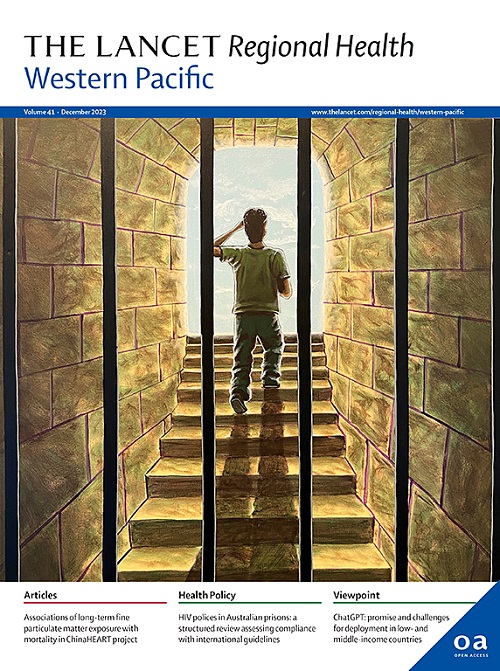Long-term effect of berberine in preventing recurrence of colorectal adenomas and neoplasms after endoscopic resection: 6-year-follow-up in a randomized, placebo-controlled, multicenter clinical study
IF 7.6
1区 医学
Q1 HEALTH CARE SCIENCES & SERVICES
引用次数: 0
Abstract
Colorectal cancer (CRC) is a leading cause of cancer deaths worldwide and in recent years its incidence is increasing rapidly in China, which constitutes a major public health burden. Almost 90% of CRC cases develop from precursor adenomatous polyps, through a series of genetic changes known as adenoma-carcinoma sequence during at least 10 years. Detection and removal of colorectal adenoma (CRA) could reduce CRC mortality risk by colonoscopy, but the recurrence rate is high. Our previous RCT study (NCT02226185) found that oral Berberine (BBR), a natural isoquinoline alkaloid extracted from the Chinese herb Coptis chinensis for 2 years significantly reduced recurrence after endoscopic removal of CRA (RR 0.77, 95% CI 0.66-0.91; p=0.001). The study recruited 895 participants who had undergone complete polypectomy within 6 months in seven hospital centers across six provinces in China between Nov 14, 2014, and Dec 30, 2016. Participants were randomly assigned (1:1) to receive BBR (0·3 g twice daily) or placebo tablets via block randomization for 2 years. After the end of randomized treatment, we continued this Follow-up Study to track adenoma recurrence for an average of 6 years till Sep 30, 2024. Besides 114 participants lost to follow up, we obtained follow-up information for 781 participants, 648 of whom underwent at least one colonoscopy after the end of study treatment and were included in this analysis. Mantel-Haenszel test was used to compute relative risks (RRs) and 95% confidence intervals (CIs) for the effect of BBR on risk of adenoma recurrence. Cox proportional-hazards model and Andersen-Gill model were used to analyze multi-recurrence by time. The study is registered with ClinicalTrials.gov, number NCT06629051. During the average 6 years follow up, we found that participants in the BBR group still had a substantially and statistically significantly lower risk of CRA than those in the placebo group (34.7% versus 52.1%; adjusted RR = 0.639, 95% CI = 0.508 to 0.785, P<0.001) and a reduction in risk of any neoplasm including inflammatory polyps, serrated lesions and colorectal cancer (adjusted RR = 0.874, 95% CI = 0.775 to 0.983, P = 0.022). Meanwhile the risk of non-advanced CRA in BBR group was lower than that in placebo group (adjusted RR = 0.634, 95% CI = 0.497 to 0.790, P<0.001). The incidence of adenoma recurrence was significantly lower in participants receiving BBR (HR= 0.601; 95% CI = 0.473-0.765; P<0.001). And in every year after treatment ended, the risk of adenoma recurrence in BBR group was lower than placebo group for all RRs<1.0 but some of which were not statistically significant. Generally, the protective effect of berberine on risk of colorectal recurrence extends up to 6 years after cessation of active treatment, even in the absence of continued supplementation.
求助全文
约1分钟内获得全文
求助全文
来源期刊

The Lancet Regional Health: Western Pacific
Medicine-Pediatrics, Perinatology and Child Health
CiteScore
8.80
自引率
2.80%
发文量
305
审稿时长
11 weeks
期刊介绍:
The Lancet Regional Health – Western Pacific, a gold open access journal, is an integral part of The Lancet's global initiative advocating for healthcare quality and access worldwide. It aims to advance clinical practice and health policy in the Western Pacific region, contributing to enhanced health outcomes. The journal publishes high-quality original research shedding light on clinical practice and health policy in the region. It also includes reviews, commentaries, and opinion pieces covering diverse regional health topics, such as infectious diseases, non-communicable diseases, child and adolescent health, maternal and reproductive health, aging health, mental health, the health workforce and systems, and health policy.
 求助内容:
求助内容: 应助结果提醒方式:
应助结果提醒方式:


